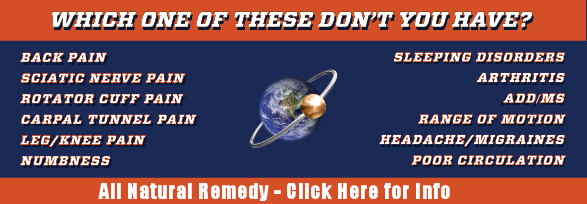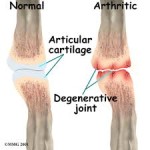At this time there is no treatment that will prevent the progression or cure the disease. However, there is conflicting evidence about using glucosamine, chondroitin, vitamin D and vitamin C in combination to reduce the damage to the joints and deformity. (1,2,3)
Treatment protocols will include rest, ice, elevation and specific exercises designed to improve the strength of the muscles which support the damaged joints. Physicians will refer patients to a physical therapist who will initially provide an exercise program to help reduce the stress on the joints. Weight loss is another significant treatment option to help reduce the stress on the cartilage, especially in the knees and hips.

Osteoarthritis causes enlargement of the small joints of the fingers. Classic bone changes at the end of the fingers are called Heberden’s nodes, named after a British physician. The deformity is the result of bone spurs. Another common bone deformity is a Bouchard node. While these deformities are not usually painful they are associated with a limitation in motion, and therefore function.
Osteoarthritis that develops at the base of the big toe will lead to the formation of a bunion because it alters the function of the bones of the feet during ambulation, or walking. Degenerative Arthritis in this location is often a result of damage done to the cartilage from repeated gout flareups. At other times there is a genetic basis found in those who suffer from Degenerative Arthritis, specifically in the toes and fingers.
There are no current blood tests which are definitive so physicians rely on a thorough medical history, physical examination and imaging studies which allow them to see the damage done in the joints. Arthrocentesis may be performed in the office to remove fluid for analysis. All of this information in combination with the character of the symptoms, the appearance of the joints and the results of the studies give physicians the information they need to accurately diagnose Degenerative Arthritis.
Unfortunately, there is no specific treatment protocol which has found to reduce the progression and decrease the pain. Physicians rely on pain medications, physical therapy, icing or heat, reduced damaging physical activity, increased strength of the muscles that support the joint and emotional support for the patients in order to help them manage sufficiently. Surgery is reserved for those individuals who have been unresponsive to conservative treatment or who have lost significant function.
References:
(1) DukeHealth: Vitamin C Worsens Knee Osteoarthritis in Animal Study
http://www.dukehealth.org/health_library/news/7640
(2) American College of Rheumatology: Low Vitamin D Levels May Worsen Osteoarthritis of the Knee
http://www.sciencedaily.com/releases/2007/11/071109202444.htm
(3) British Medical Journal: Effects of Glucosamine, Chondroitin or Placebo in Patients with Osteoarthritis of Hip or Knee: Network Meta-analysis
http://www.bmj.com/content/341/bmj.c4675.full
| Advertisement | |
 |
|



Leave a Reply